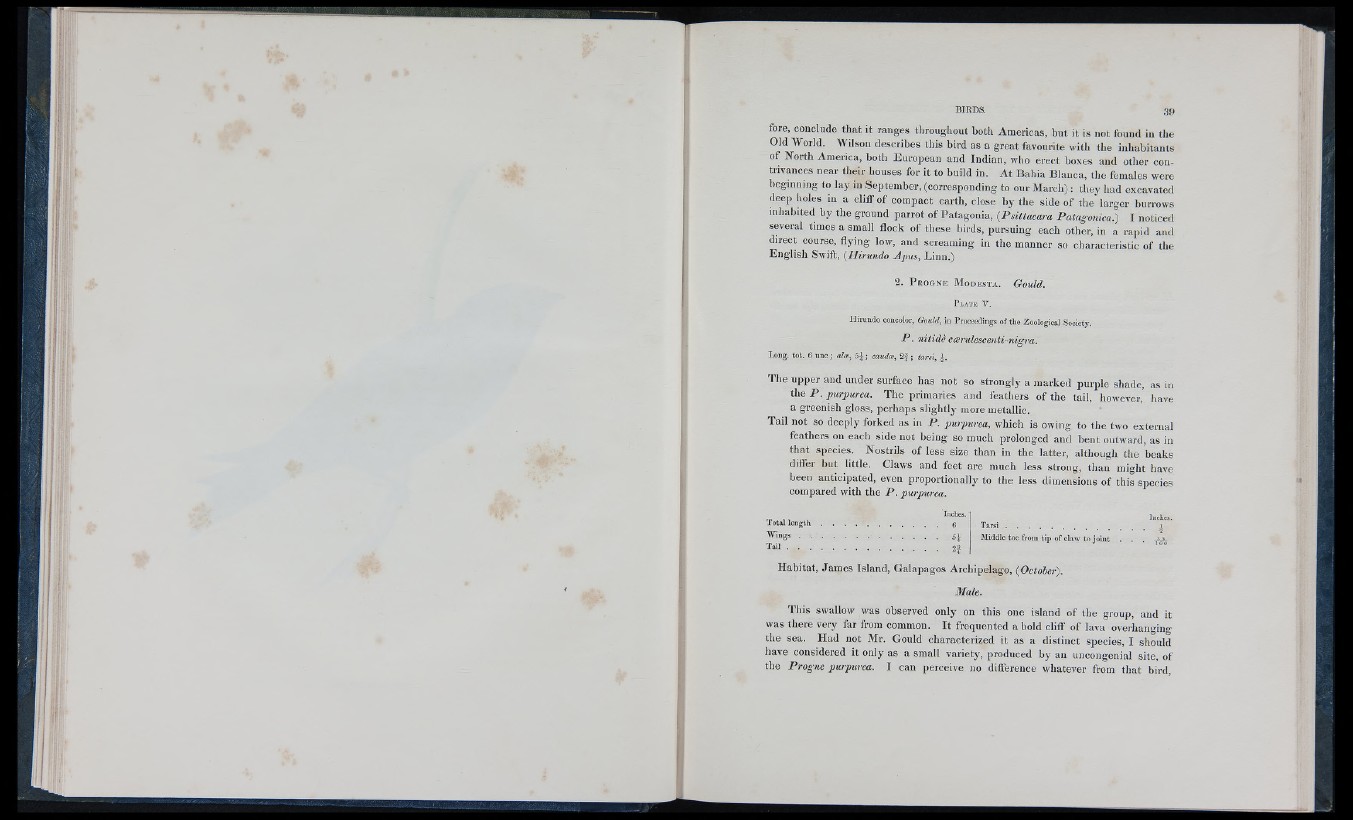
fore, conclude that it ranges throughout both Americas, but it is not found in the
Old World. Wilson describes this bird as a great favourite with the inhabitants
of North America, both European and Indian, who erect bo.xes and other contrivances
near their liouses for it to build in. At Bahia Blanca, the females were
beginning to lay in September, (corresponding to our March) : they liad excavated
deep holes in a cliff of compact earth, close by the side of the larger burrows
inhabited by the ground parrot of Patagonia, {Psittacara Patagónica.) I noticed
several times a small flock of these birds, pursuing each other, in a rapid and
direct course, flying low, and screaming in the manner so characteristic of the
English Swift, {Hirundo Ap us, Linn.)
2 . P r o g n e M o d e s t a . Gould.
P late V.
Hirundo concolor, Gould, in Proceedings of the Zoological Society.
P . nitidè cærulescenli-nigra.
Long. tot. 6 une ; aloe, j caudæ, 2 f ; tarsi,
The upper and under surface has not so strongly a marked purple shade, as in
the P . purpurea. The primaries and featliers of the tail, however, have
a greenish gloss, perhaps slightly more metallic.
Tail not so deeply forked as in P . purpurea, which is owing to the two external
feathers on each side not being so mucll prolonged and bent outivard, as in
that species. Nostrils of less size than in the latter, although the beaks
differ but little. Claws and feet are much less strong, than might have
been anticipated, even proportionally to the less dimensions of this species
compared witli the P . purpurea.
Inches.
Total l e n g t h ......................................................... g
W i n g s .................................................................... 5i
Middle toe from tip of claw to joint . . .
..............................................................................2}
Habitat, James Island, Galapagos Archipelago, {October).
Mate.
Inches.
1
This swallow was observed only on this one island of the group, and it
was there very far from common. It frequented a bold cliff of lava overhanging
tlie sea. Had not Mr. Gould cliaracterized it as a distinct species, I should
have considered it only as a small variety, produced by an uncongenial site, of
tlie Progne purpurea. I can perceive no difference whatever from that bird.